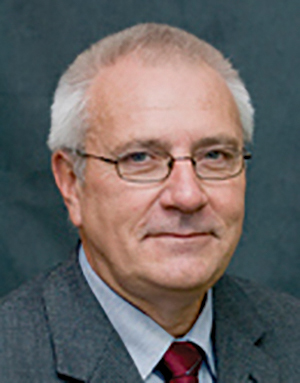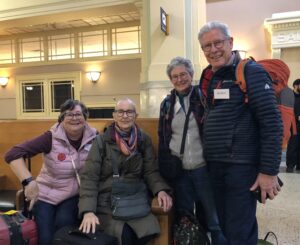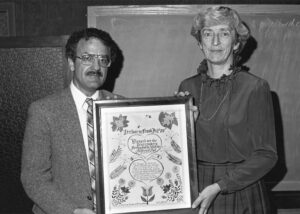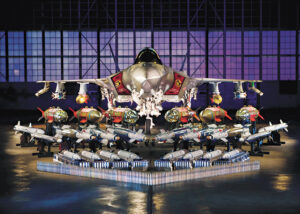The political scientist Harold Lasswell once defined politics to be “who gets what, when and how.” If that is politics, peace studies in contrast can be seen as an attempt to answer the question “why” things are given to whom, when and how.
While peace studies is concerned about the political challenge of stopping people or nations from killing or doing horrible things to each other, its goal is bigger than simply resolving conflict or containing violence. Don’t get me wrong. Resolving conflict is a good thing, but no positive social change has ever occurred without conflict.
Think of people who have effectively promoted positive change. Mahatma Gandhi, Martin Luther King, Mother Teresa, Malala Yousafzai—just to name a few—all challenged the status quo by escalating conflicts in order to promote justice and peace. Escalation draws attention to an issue, requiring the dominant power(s) to respond. Movements such as #MeToo, or those raising concerns of Indigenous peoples in Canada, publicly confront injustice and stimulate discussions within society without which change is unlikely. Conflict escalation can be messy and uncomfortable, even dangerous at times, but it is essential to the development of a more just and inclusive society.
Peace studies programs are important because they teach students both the skills of analysis necessary to understand the laws, institutions and customs that make up the status quo, and strategies to promote a more peaceful and just world. While conflict itself can often be a good thing, violence almost always poisons a dispute. The challenge for peace studies programs is to help students develop their vision for what peace might look like, and how it can be constructed or reconstructed without violence. The ultimate goal is to build a world in which the dignity of everyone is affirmed and respected.
Work to achieve the goal of dignity for all requires creative thinking and mobilization of many resources. Imagine, for example, that the physical structure of a house symbolizes the laws, institutions and customs of society that are designed to regulate how we live with each other. These rigid and not easily changeable laws, institutions and systems—the floors, walls, roof, doors and windows—are set in place to protect the occupants from the arbitrary use of power or violence against them.
Figuratively, imagine the roof as protecting the occupants from the hail of persecution, the walls from the driving winds of hate, the floor from the seeping cold of discrimination, while the windows allow them to look at other options they may wish to explore safely, and the doors allow one to come and go yet be protected from interference from others.
Without this structure, they could freeze to death during a cold Canadian winter, die of exposure if forced to live outdoors year-round, or be put at risk with no place of refuge from natural or criminal elements that may do them harm. Human beings need structures that protect in order to not merely survive, but to thrive. The thriving of the human spirit, not mere existence, is the essence of peace.
However, this same image of a house also illustrates the problem. A structure by definition includes, and excludes, certain territory and people. Ask any marginalized or oppressed people if they have felt protected or included by the laws, institutions or structures of society, and many will respond emphatically “no.” Virtually every major human rights violation we can think of—apartheid, gender discrimination, residential schools, discrimination against persons with a disability, religious discrimination, starvation, you name it—has at one time been enshrined in law or allowed to continue unabated by how law was applied.
Peace studies programs serve as one of many architects of a just society by helping to analyze the impact and design of the figurative house in two different ways.
First, peace studies architects analyze how a house may better serve its occupants and, through nonviolent conflict resolution, begin remodelling as needed. Just to have some fun, let’s look at just one unconventional example of how the design of our figurative house may have a direct and profound peace impact.
Are you concerned about improving the quality of human life, extending life expectancy, reducing suffering and disease, advancing dignity, reducing sexual assault and increasing the chances that girls can obtain an education in poor nations? If so, the inclusion of a toilet into the design of our figurative house is probably the single biggest intervention you can make that advances every single one of the above agendas.
The toilet, where available, has been instrumental in extending life expectancy by approximately 20 years, reducing sexual assault and increasing school attendance, and, where absent, is an important part of the reason why the World Toilet Organization estimates that a thousand children die per day of a sanitation-related illness. Looked at this way, the toilet is an essential part of the house of peace, and water and sanitation engineers are peacebuilders. The design of peace and justice includes sanitation.
But a house, even a very nice one with a kitchen and pantry (adequate food), living room (place for people to meet) and a bedroom (safe place to sleep), does not create community for the occupants. For life to have meaning, the community attributes of love, personal warmth, true respect for the uniqueness of each individual and culture, empathy, care, forgiveness and genuine interpersonal tolerance must be present. These intangible attributes, which are the foundation of healthy relationships that nourish the human spirit, are impossible to be mandated by a system or structure, no matter how good it is.
Second, peace studies programs therefore complement structural analyses with an emphasis on what are referred to as soft skills—the study of mediation and negotiation, the appropriate use of rights and power, restorative justice, trauma healing, forgiveness, religious and cultural understanding—many of the same things that are central to our faith. These skills are an essential part of a vibrant civil society.
Constructing a house of peace that is inclusive, containing a healthy and safe environment in which the human soul can thrive, requires the involvement of all vocations and disciplines. No one discipline or perspective can do it all or has all the answers.
The Peace and Conflict Studies (PACS) program sponsored by Conrad Grebel University College in Waterloo, Ont., for example, prepares students to get their hands dirty building places of peace through two main strategies:
- First, sponsorship of an internship program launched by former PACS director Ron Mathies has involved more than 250 interns who have worked in 50 countries for more than a hundred organizations. Internships almost always are life-changing, as students are given the opportunity to hone their peace construction skills.
- Second, PACS recognizes it is essential to involve disciplines across the entire University of Waterloo to build and sustain peace, and therefore includes courses from 21 different departments in the PACS program. PACS students cannot graduate with a PACS degree by only taking PACS courses, a point that the first director, Conrad Brunk, repeatedly emphasized when he advocated to a sceptical University of Waterloo four decades ago that PACS be approved.
All successful peace studies programs share a perspective that values hands-on internships combined with tenacious inter-disciplinarity. A project several PACS instructors are currently working on aims to extend the scope of interdisciplinary impact through conversations with professors from the University of Waterloo faculties of math, science, applied health sciences and engineering, to explore how these disciplines are preparing their students to be more effective agents of peace in this era of growing divisiveness and inequality. The premise of this project is that peace is everyone’s business.
Peace studies programs were formed to accomplish the dual objective of teaching students how to build just structures and systems, and, at the same time, infuse them with healthy relationships and a dignity-affirming environment. This approach to peace studies, combined with the traditional Mennonite values of service and pacifism, looks a lot like what Micah 6:8 calls us to be as we answer the “why” question concerning who gets what, when and how. What does the Lord require? Do justice (ensure that structures and systems are just) and love mercy (foster healthy relationships), while walking humbly with our God.
Lowell Ewert is associate professor of Peace and Conflict Studies at Conrad Grebel University College in Waterloo, Ont. He is currently on sabbatical until the end of June 2018.
See also: “Building bridges.”
For discussion
1. Who are some people who have worked to resolve conflicts and to improve society? Can you think of examples where conflict had to be escalated in order to promote justice and peace? Lowell Ewert writes that, “no positive social change has ever occurred without conflict.” Do you agree? Why might this be true?
2. According to Ewert, “the ultimate goal [for peace studies] is to build a world in which the dignity of everyone is affirmed and respected.” Why is dignity for all so important? Do you agree with Ewert that “violence almost always poisons a dispute”? How do violence and the arbitrary use of power destroy dignity?
3. What role do laws, institutions and customs play in allowing a society to thrive? How is a society affected if some people feel oppressed or marginalized? What are the “soft skills” that Ewert says are necessary to a vibrant civilized society?
4. The peace studies program at Conrad Grebel University College works hard to be interdisciplinary. Why is that important? Are there other ways to work at fostering healthy relationships?
—By Barb Draper








Leave a Reply
You must be logged in to post a comment.